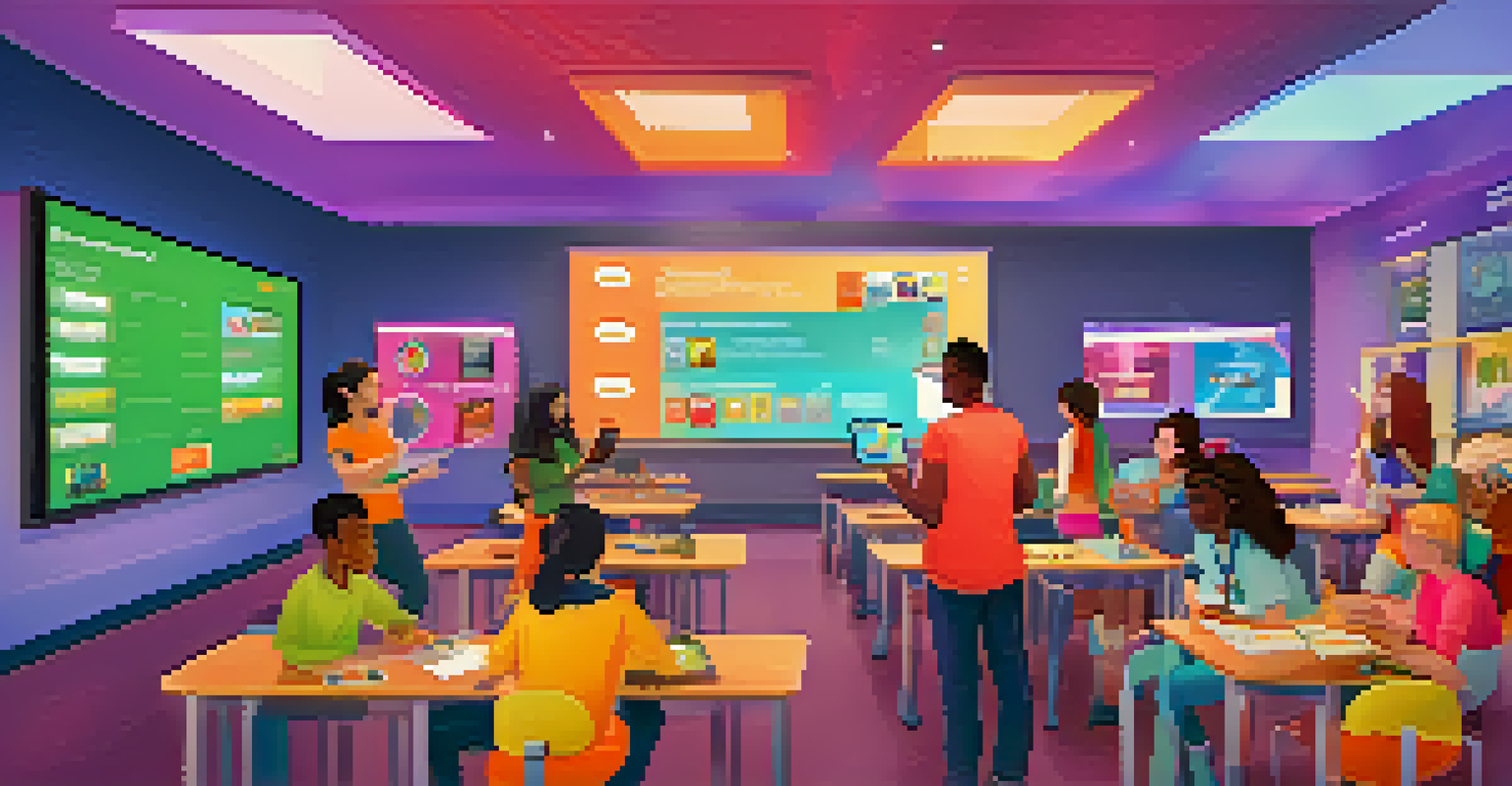The Future of Online Learning Communities: Trends to Watch

The Rise of Social Learning Platforms
Social learning platforms are gaining traction as they foster collaboration and peer-to-peer interaction. With tools like discussion forums and video chats, learners can engage more actively with one another. This shift emphasizes the importance of community in the learning process, making education feel less isolating and more connected.
The greatest gift is a passion for reading. It is cheap, it consoles, it distracts, it excites. It gives you knowledge of the world and experience of a wide kind.
Moreover, these platforms cater to diverse learning styles, allowing individuals to learn at their own pace while still benefiting from group dynamics. For instance, platforms like Slack and Discord have become popular for creating learning pods where users can share insights and resources. This collaborative environment nurtures a sense of belonging that enhances motivation and retention.
As we look to the future, we can expect more institutions to adopt these social elements, transforming traditional courses into dynamic learning experiences. The goal is to blend knowledge acquisition with social interactions, making learning not just informative but also enjoyable and engaging.
Personalized Learning Experiences
Personalization in online learning communities is becoming increasingly important, as it allows learners to tailor their education to their unique needs. With advancements in AI and machine learning, platforms can analyze user behavior to provide customized learning paths. This means students can focus on areas where they need improvement while skipping content they already understand.

For example, platforms like Coursera and Udemy use algorithms to recommend courses based on previous learning experiences and preferences, creating a more relevant educational journey. This adaptability not only enhances learner satisfaction but also leads to better outcomes, as individuals are more likely to engage with content that resonates with them.
Social Learning Enhances Engagement
Social learning platforms promote collaboration and community, making education more interactive and less isolating.
Looking ahead, personalized learning will likely become the norm rather than the exception. As educational institutions recognize the varying needs of their students, expect a push towards more tailored experiences that empower learners to take charge of their educational journeys.
Gamification: Making Learning Fun
Gamification is revolutionizing online learning communities by incorporating game-like elements into educational experiences. This approach leverages competition, rewards, and challenges to motivate learners and make the process enjoyable. By turning lessons into games, students are more likely to stay engaged and retain information.
Education is not the filling of a pail, but the lighting of a fire.
Take platforms like Kahoot! and Duolingo, which use quizzes and interactive activities to teach concepts in a fun way. These platforms not only encourage learning but also build a sense of community as learners compete and collaborate. Gamification transforms traditional education into an interactive adventure, fostering excitement around learning.
As we move forward, expect to see more online communities embracing gamification techniques. This trend will likely enhance user engagement, making the learning process not just effective but also something that learners look forward to.
Increased Focus on Mental Health and Well-being
The mental health of learners is gaining more attention, especially in the context of online learning communities. As students navigate their educational journeys, the stresses of remote learning can take a toll on their well-being. Therefore, platforms are beginning to incorporate resources and support systems to address these concerns.
For instance, many online communities are now offering access to mental health resources, peer support groups, and wellness workshops. By fostering an environment that prioritizes mental health, these platforms not only enhance the learning experience but also create a more empathetic and supportive community.
Personalization is Key to Success
Advancements in AI are enabling tailored learning experiences that cater to individual needs, enhancing learner satisfaction and outcomes.
In the future, we can expect a stronger emphasis on mental health within online learning environments. This focus will not only help individuals thrive academically but also ensure they are emotionally supported throughout their educational experiences.
The Role of Data Analytics in Learning
Data analytics is playing a crucial role in shaping the future of online learning communities. By collecting and analyzing user data, educational platforms can gain insights into learner behavior and preferences. This information helps in refining course offerings and enhancing user experiences.
For example, tracking engagement metrics can reveal which content resonates most with learners, allowing educators to focus on effective teaching methods. Additionally, data analytics can identify at-risk students, enabling timely interventions to support those who may be struggling.
As technology continues to advance, the use of data analytics will likely become more sophisticated. Expect online learning communities to leverage this powerful tool to create more effective, responsive, and personalized educational experiences.
The Importance of Global Collaboration
Global collaboration is becoming a key trend in online learning communities, allowing learners from different backgrounds to connect and share knowledge. This cross-cultural interaction enriches the learning experience by introducing diverse perspectives and ideas. It also prepares students for a globalized world where collaboration is essential.
Online platforms like edX and FutureLearn facilitate this global exchange by offering courses that bring together participants from various countries. Such diversity fosters a richer dialogue and encourages learners to think critically about different viewpoints. It breaks down barriers and promotes empathy among participants.
Hybrid Models Offer Flexibility
By combining online and in-person elements, hybrid learning models provide adaptable educational experiences that meet diverse student preferences.
Looking ahead, expect a continued emphasis on global collaboration in online learning. By leveraging technology to bridge distances, educational communities can create truly inclusive environments that celebrate differences while promoting shared learning.
Embracing Hybrid Learning Models
Hybrid learning models are emerging as a prominent trend in online education, combining the best of both online and in-person experiences. This approach offers flexibility, allowing learners to choose how they engage with content and interact with instructors and peers. The result is a more adaptable educational experience that meets varied student needs.
For instance, institutions are now offering hybrid courses that blend online lectures with face-to-face discussions, creating a dynamic learning environment. This model not only caters to different learning preferences but also fosters a sense of community among participants. Students can benefit from the structure of in-person classes while enjoying the convenience of online learning.

As we move forward, the hybrid model is likely to become more widespread, providing learners with the freedom to choose their educational paths. This flexibility will empower individuals to engage with their studies in ways that suit their lifestyles and learning preferences.